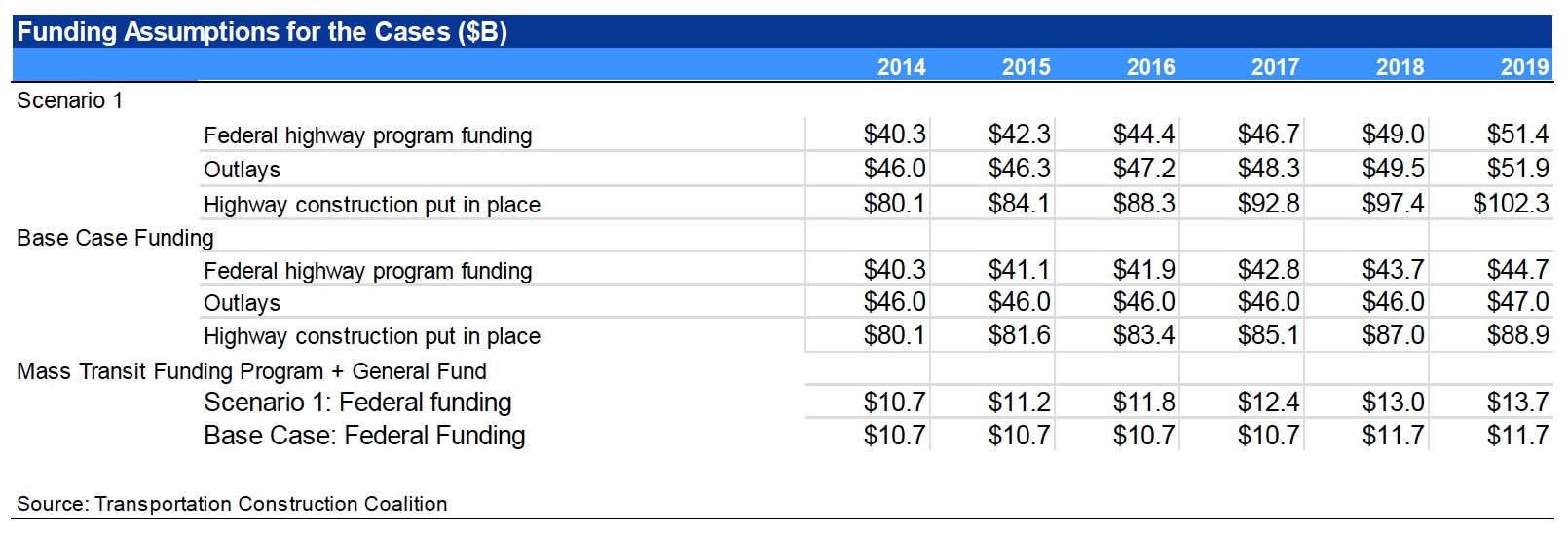EXECUTIVE SUMMARY
Federal transportation spending expands the capital stock of the US economy, drives the production and delivery of goods and services, and positively affects business and household incomes. It also enhances the transportation system’s operational capacity by reducing travel times and costs. This results in greater accessibility for individuals, households and businesses, more efficient delivery of goods and services, improved life styles and standards of living, and safer roadways.
IHS used two models to evaluate the macro and micro economic effects of Highway Trust Fund spending. Both showed the availability of funds delivered to state and local governments have far-reaching indirect effects – for every $1 of federal transportation investment returns between $1.80 – $2.00 of additional real goods and services produced in the economy.
Macroeconomic results revealed that current levels of federal spending on highway and mass transit contributes nearly 1% to the US production of goods and services. The current level of funding contributes on average 614,000 jobs per year over the 2014-2019 time period and adds an average of $410 to each US household’s real income each year. A 5% increase in annual spending through 2019 would result in an average of 59,400 additional jobs per year and an annual average increase of $40 in real household income. Federal spending also produces indirect benefits and induces growth in key economic sectors. The sector that experiences the largest benefit, in terms of jobs created, is the Business and Professional Services sector. The Trade, Transportation and Utilities sector, which includes wholesale and retail companies, is a close second.
In summary, over the 2014 to 2019 time frame:
- Infrastructure spending has an amplified impact on the economy. It leads to overall productivity enhancements and creates jobs.
- Every $1 in federal highway and mass transit investment returns between $1.80 – $2.00 in goods and services produced.
- Current federal transportation spending contributes on average $410 to real income per households each year (which is comparable to a month’s worth of groceries).
- Current federal transportation spending supports an average of 614,000 employees each year in all sectors of the economy. It catalyzes dynamic effects of greater productivity, more efficient delivery of goods and services, and higher wages and salaries.
- For every 3 construction job created, 5 jobs are created in other sectors of the economy.
- Current federal transportation spending generates $31 billion in federal personal tax receipts per year and $6 billion in federal corporate tax receipts per year on average. Current federal spending also generates higher revenue for state and local budgets, which are, on average, $21.7 billion higher each year than they would be without the Federal Highway Program.
- Five percent annual increases in federal spending would create: between 78,000 and 122,000 new jobs by 2019 (includes direct, indirect, and induced jobs); an additional $40 in real household income each year; an additional $9.6 billion in real value to the US economy by 2019; on average an additional $4.9 billion per year in federal, state and local government revenue, which covers more than 50% of the annual spending needed to cover the backlog in highway and bridge capital expenditures.
Clearly, transportation infrastructure investment is critical to the economic wellbeing of the US.
Download full version (PDF): Transportation Infrastructure Investment
About the Transportation Construction Coalition
www.transportationconstructioncoalition.org
Established in 1996, the Transportation Construction Coalition (TCC) includes 31 national associations and labor unions with a direct market interest in the federal transportation programs. The TCC focuses on the federal budget and surface transportation program policy issues.
Tags: Federal Funding, Transportation Construction Coalition







 RSS Feed
RSS Feed